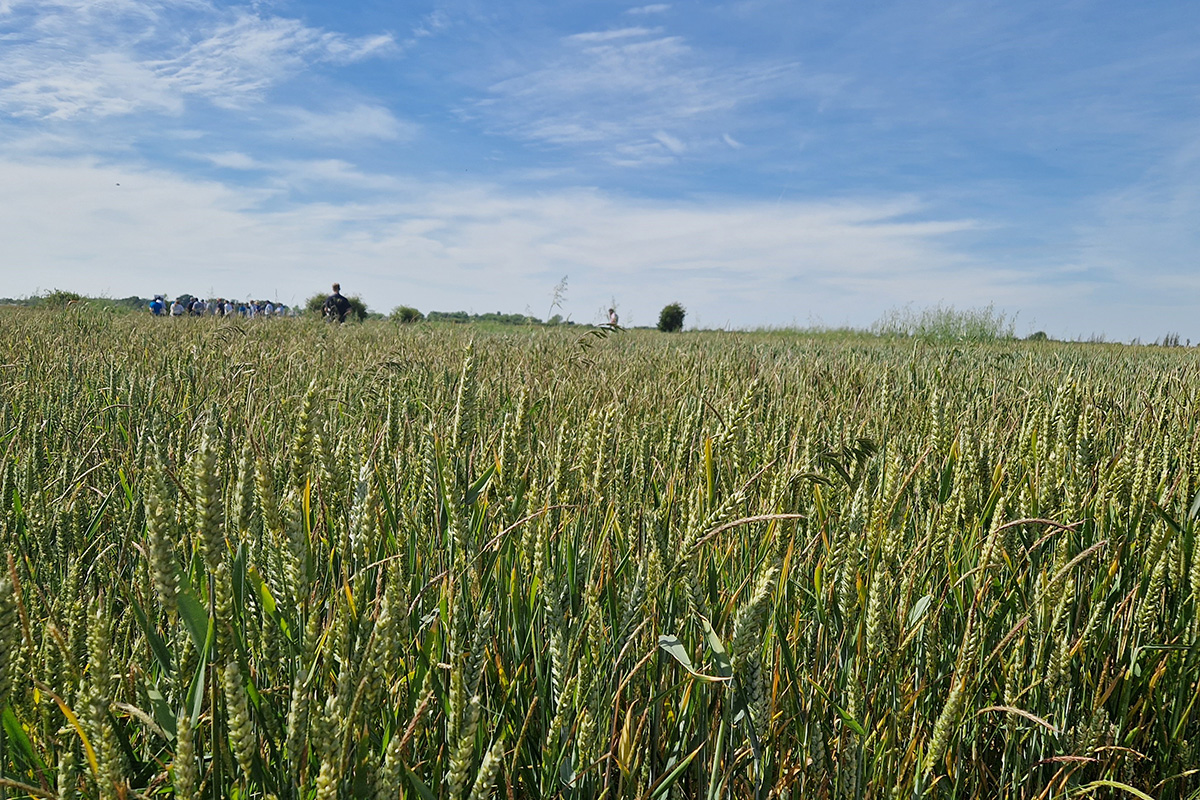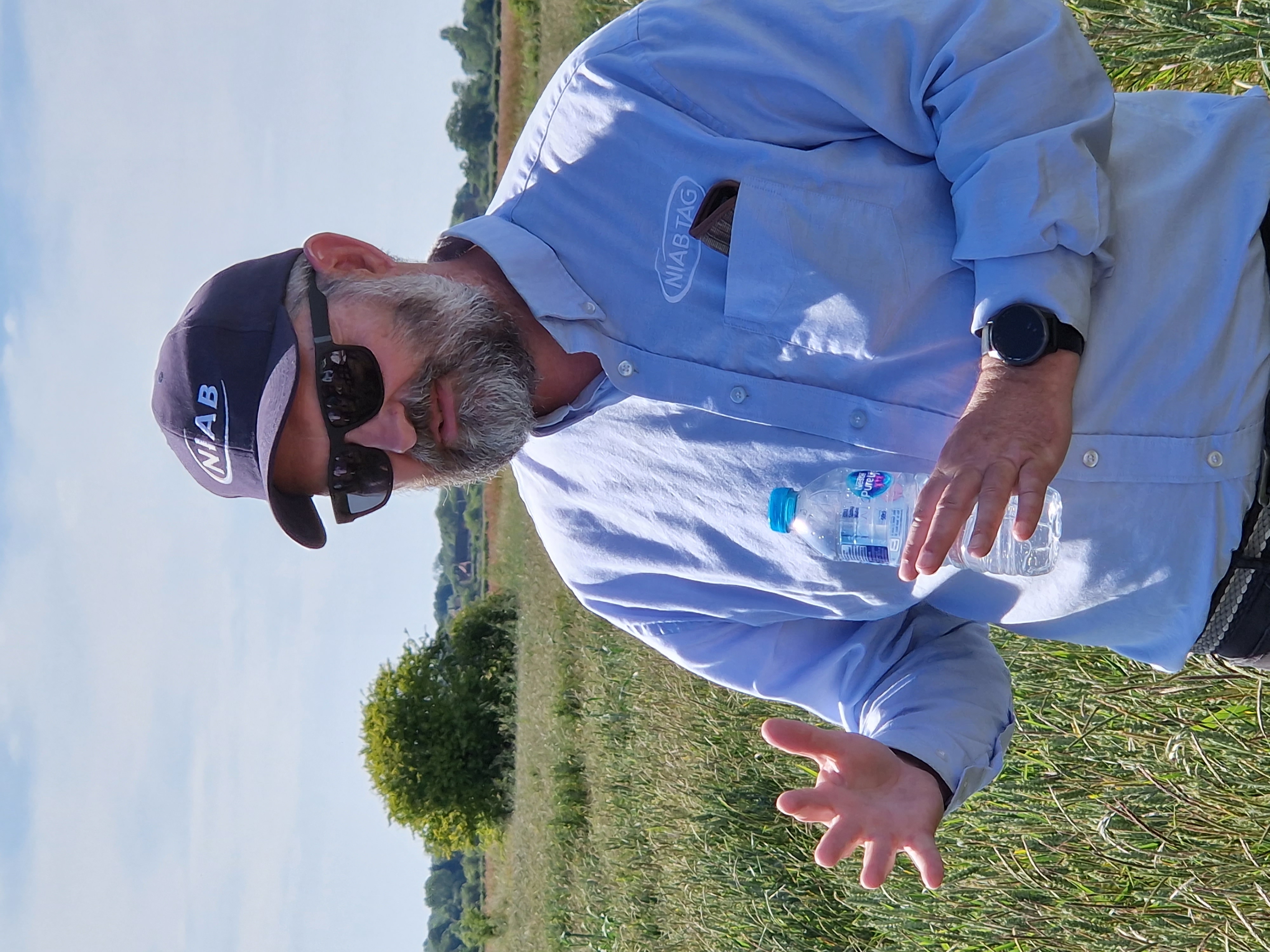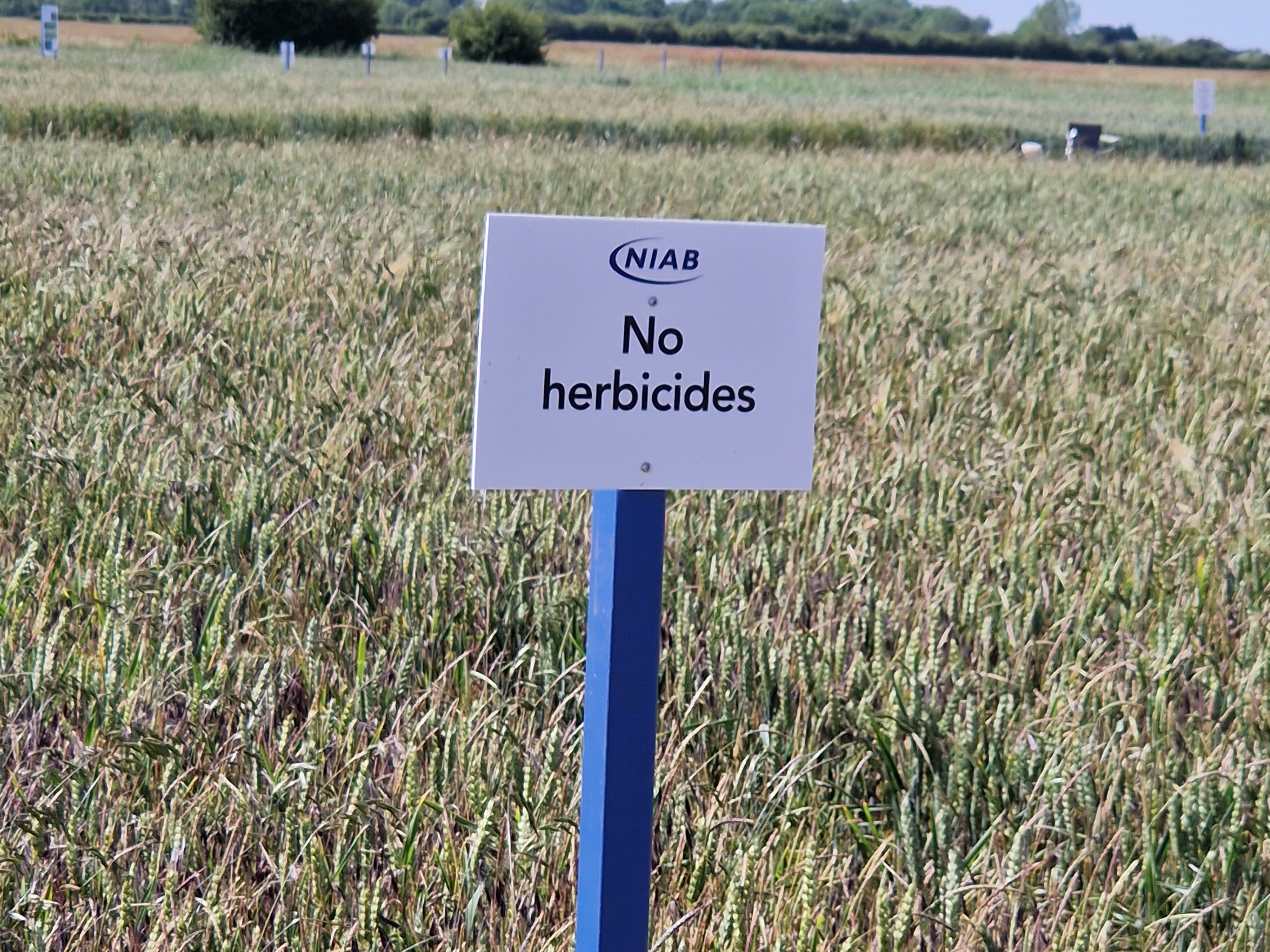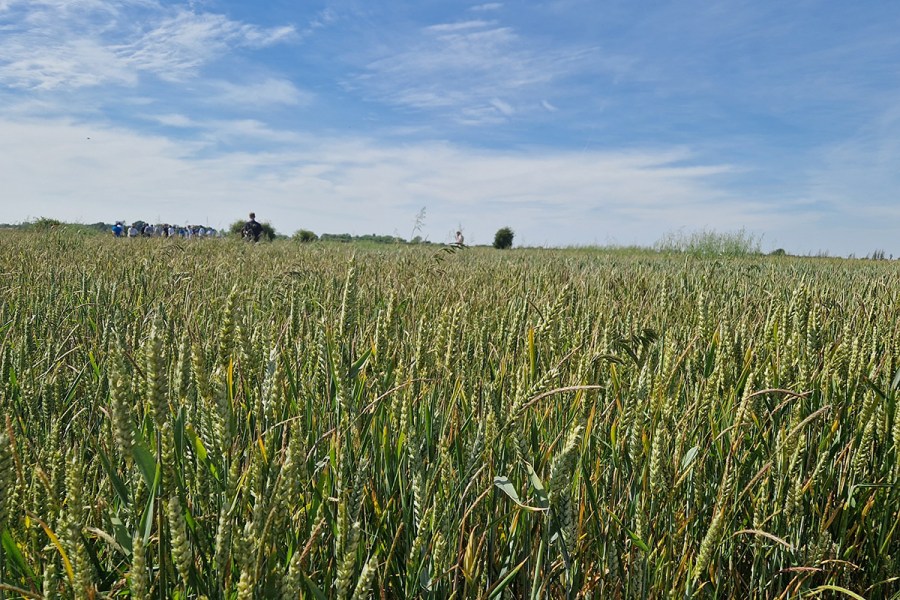
Last month BASF’s eagerly awaited blackgrass herbicide was officially launched to the industry. CPM was there to find out what to expect from the Luximo chemistry.
We’re fundamentally in the same place but Luximo offers the opportunity for more performance
By Lucy de la Pasture
It’s not very often that a new herbicide mode of action arrives on the market for blackgrass control, in fact it’s 21 years since it last happened. But on 13 June BASF finally got the nod from CRD, just in the nick of time for the planned launch of its new active substance Luximo (cinmethlyin) and the formulated product containing it, Luxinum Plus, at NIAB’s Hardwick site in Cambridgeshire a couple of days later.
The new active will be marketed as a 5ha co-pack with Stomp Aqua (pendimethalin). It’s intended to be used at a recommended rate of 0.7 l/ha Luxinum Plus with 2.0 l/ha Stomp Aqua, delivering 500g/ha cinmethylin and 910g/ha PDM.
There was a festival vibe as the new product was revealed to the industry, with technical presentations and a tour of trial demonstrations before an informal celebration with food, drink and a live band. As the first post-Brexit approval through the repatriated GB regulatory process, there was double reason to celebrate.
BASF’s Stuart Kevis explains that cinmethylin isn’t a new discovery, it was first found in the 1970s where it was looked at for the North American market but it turned out that it wasn’t commercially viable for the company at that time.
“BASF gained approval for cinmethylin’s use on rice in Asia but after using up the development batch, the active was mothballed,” he explains.
That is until it was dusted off in Germany and added to a screening programme set up to identify possible new candidates for blackgrass control. After that, cinmethylin was at the front of the queue for putting through the regulatory approvals process.
Originally cinmethylin was classified with an ‘unknown’ mode of action (MoA), but science has moved on and it has been discovered to be an inhibitor of fatty acid thioesterase. That sets it apart from all the other grassweed herbicides available, which mostly belong to the same MoA group (group 15) and inhibit very long chain fatty acid synthesis. Cinmethylin is a benzyl ester officially belonging to HRAC Group 30.
In simple terms, the new active inhibits the synthesis of new cell membranes which means seedlings can’t grow, explains BASF’s Steve Dennis.
“In the field, weeds often never emerge but when they do the leaves show yellowing and discolouration before the plant withers and dies. But Luximo’s activity isn’t just through root uptake, it also has efficacy on seeds so will catch susceptible grassweed seeds on the soil surface.”
So which grassweeds is the new herbicide effective on? Blackgrass and Italian ryegrass are the two grassweeds with label claims, explains Steve. “Luximo does has some activity on perennial ryegrass, provided it is growing from seed, and it has some effect on wild oats but neither is enough to support a claim for control on the label.”
Bromes are also not susceptible to Luximo so that may be something to bear in mind where there are mixed populations of grassweeds, he adds.
So what can growers expect in terms of performance? The message from BASF is very much along the lines that Luximo offers a significant improvement but it’s not a silver bullet, instead it offers a further marginal gain. The company says rates must be maintained and most importantly, don’t stop doing cultural controls.
This message was illustrated vividly in the field trials at Hardwick. Here the inherent grassweed pressure is immense – way beyond a situation that would be viable for commercial winter cropping. If the attendees at the launch event were expecting spotless plots where Luximo had been applied, then they would have been disappointed but what was evident was the extra control it offered over existing standards.
“We’re fundamentally in the same place but Luximo offers the opportunity for more performance,” believes NIAB weed guru John Cussans, standing in a drilling date trial and surrounded by an eyewatering amount of blackgrass.

Under a blistering June sun, John Cussans explains the hierarchy of control and points out that Luximo does nothing on brome and wild oats.
Waving his arm across the trial, he points out the different herbicide treatments across plots which have a five-week difference in drilling date. “If you let up on other cultural control elements then there will be a step backwards using Luximo.”
It was a significant warning to growers that the arrival of the new herbicide won’t compensate for the added blackgrass pressure from drilling wheat in September. John points out that delaying the drilling date alone will do more for blackgrass control than any herbicide is capable of.
“You have to fix the things at the top of the hierarchy of control before you work down to your herbicide decisions,” he says. “That means take action on rotations, delaying drilling and drilling into the right conditions for herbicides to be at their most effective.
“Delaying drilling date by a month can decrease your blackgrass pressure by 50-66%, so every week you delay then you’re losing blackgrass in your crop,” stresses John.
“None of this has changed with the arrival of cinmethylin. At blackgrass populations of 1000 heads/m2, you’ll need to spend £120/ha on herbicides before you start to have any effect on seed return at the end of the season. It’s just not sustainable to even try and rely on herbicides to tackle the problem.”
As the group move to the latest drilling date – 4 November – the reduction in blackgrass pressure is obvious, with the untreated early drilled plots at 450 plants (1000 heads)/m2 and the untreated latest drilled plots a population of 100 plants/m2.
“You can see that the blackgrass population in this delayed drilling plot is less than the herbicide treated earlier drilling plots,” he notes.
John also points out that even though control differences can be made by tweaking herbicide application practices – nozzle types, water rates etc – these are small compared with the other cultural levers that can be pulled.
“When it comes to optimising herbicide performance then it’s best to adopt the mindset to actually stop the drill to make sure the sprayer is up to date with any ground already drilled – the aim has to be to get the pre-em on within 48 hours of drilling,” he adds.

The grassweed population at the NIAB Hardwick site is immense and really highlighted that the biggest contribution to blackgrass control is from cultural measures.
BASF agronomy manager Andrew Clune also talks about building on the hierarchy of control but highlights that later drilling generally means less spray opportunities. With that in mind the company has looked at control from different chemistry using different nozzle types, and applying in either 100 or 200 l/ha of water.
“We’ve seen a big difference between flat fan and drift reduction technology nozzles in this trial at the different water volumes, but Luximo has been consistent with both nozzle types and at 100 and 200 l/ha. It underlines its application flexibility, giving growers the opportunity to get over the ground quickly,” he notes.
The efficacy data for the new active has been drawn from more than 100 trials and further supports that it will be a useful addition to the herbicide ranks, says Stuart. “Luximo isn’t just for heavy blackgrass situations, the data shows it consistently outperforms flufenacet, regardless of blackgrass pressure.”
Flufenacet has provided the backbone for residual herbicide stacks as other chemistry has flagged under pressure from resistance. The aim is that Luximo can relieve some of this pressure and do more of the ‘heavy-lifting’, he adds.
“We’re seeing an uplift in blackgrass control of 20 percentage points over that achieved by flufenacet. Blackgrass control from Luximo (now available as Luxinum Plus) plus PDM is comparable with Crystal (flufenacet+ pendimethalin) plus DFF plus Avadex (triallate).
“That’s not to say that there’s no place for Avadex when using Luximo, we’ve seen a further uplift in control of +9%,” he adds
Cinmethylin is claimed to be even better at tackling Italian ryegrass, which could be good news to growers struggling with the weed and will help take some weight off the shoulders of flufenacet, particularly as resistance has been found in some IRG populations.
And it’s resistance that will be foremost in many minds in the wake of the trickle of herbicides that have effectively come and gone over the past decade or more. The hopeful news is that screening against artificially created non-target site resistant populations at Rothamsted hasn’t identified any direct cross-resistance to the new active, says Stuart.
Summing up, he outlines how to get the best out of the flagship product. “It’s a soil residual herbicide so it has to get to the weed’s rooting zone. As with all soil residual herbicides, seedbed conditions are critical and remember that trash acts as a barrier.
“Pre-emergence application is best and it can be applied at the peri- or early post-emergence timings, though performance will begin to drop off,” he highlights.
“The label states that the crops should be drilled at 3cm to avoid crop damage and it’s also important to make sure the slot is closed after drilling. Crop stress can also compromise safety, so avoid situations where water-logging may occur and don’t apply to crops drilled after 15 November.”
The biggest unknown about Luxinum Plus remains its price, with the company yet to announce its autumn pricing.
This article was taken from the latest issue of CPM. For more articles like this, subscribe here.




